Lonely Robot Theme is going paid, yay me! Nothing is going behind a paywall at the moment, but if would like to support me you can become a paying subscriber here . Many thanks, LRT.
The 1950s was a pivotal decade for the Abstract Expressionist movement in New York City, as artists broke away from traditional art forms and embraced non-representational techniques. While the contributions of male artists like Jackson Pollock and Willem de Kooning are well-documented, the role of women artists in shaping Abstract Expressionism has often been overlooked. This essay sheds light on the remarkable women who played a vital role in the movement, challenging gender norms and redefining the boundaries of artistic expression in 1950s New York.
In the male-dominated art world of the 1950s, women faced numerous obstacles to gaining recognition and acceptance. However, a group of pioneering women persevered, pushing the boundaries of artistic expression and defying societal expectations. These women were determined to be more than just "women artists"; they sought to be recognized for their artistic merit and contribution to the evolution of Abstract Expressionism.
Lea Krasner.
Among the foremost women artists of Abstract Expressionism was Lee Krasner, who was not only married to Jackson Pollock but also an accomplished artist in her own right. Krasner's bold and dynamic paintings demonstrated her mastery of color and form. Her work showed a deep emotional intensity and an ability to channel her feelings onto the canvas, echoing the spirit of the Abstract Expressionist movement. Despite the challenges she faced as a woman artist, Krasner's talent and determination earned her recognition as one of the leading figures of the movement. See my previous post about Kransner’s work here .
Joan Mitchell.
Joan Mitchell was another prominent woman artist who left an indelible mark on Abstract Expressionism. Her vibrant and energetic paintings reflected a fiery vision, capturing the intensity of emotion and movement. Mitchell's work often evoked the landscapes of her childhood in the Midwest, filled with abstracted forms and powerful brushstrokes. Her ability to convey a sense of place and emotion through abstraction set her apart as a significant artist of the movement.
Grace Hartigan.
Grace Hartigan's artistic journey led her to blend elements of Abstract Expressionism with figurative and representational elements. Her paintings often featured fragmented images of people and objects, infused with the spontaneity and energy characteristic of Abstract Expressionism. Hartigan's willingness to experiment with different styles made her a standout figure in the movement, challenging the notion that women artists could only paint in a singular "feminine" style.
Helen Frankenthaler
Helen Frankenthaler's innovative technique of staining color directly onto unprimed canvas revolutionized the Abstract Expressionist movement and paved the way for Color Field painting. Her large, vibrant canvases demonstrated a masterful control of color and a unique approach to abstraction. Frankenthaler's work showcased a delicate balance of structure and spontaneity, exemplifying the progressive spirit of the 1950s art scene in New York.
Despite their significant contributions to Abstract Expressionism, women artists of the 1950s faced challenges in gaining the same recognition and acclaim as their male counterparts. However, their resilience and artistic vision left a lasting impact on the movement and paved the way for subsequent generations of women artists to find their voice in the art world. The legacy of these pioneering women continues to inspire contemporary artists and serves as a reminder of the importance of recognizing and celebrating women's contributions to art history.
Women's Abstract Expressionism in 1950s New York was a force that defied societal norms and challenged the male-dominated art world. Artists like Lee Krasner, Joan Mitchell, Grace Hartigan, and Helen Frankenthaler pushed the boundaries of artistic expression, leaving a lasting impact on the Abstract Expressionist movement. Their talent, determination, and innovative spirit paved the way for greater gender equality in the art world and inspired generations of artists to come. By acknowledging and celebrating the contributions of these remarkable women, we honor their role in redefining the artistic landscape of 1950s New York and beyond.
Now let take a bit of a deep dive into the life of one of my favourite painters, Helen Frankenthaler.
Helen Frankenthaler was a highly influential American abstract expressionist painter known for her innovative approach to color and her pioneering role in the development of the "Color Field" movement. She was born on December 12, 1928, in New York City to a well-to-do family, and her early exposure to art and culture had a profound impact on her artistic journey.
Frankenthaler's interest in art blossomed during her childhood, and she began formal art education at the Dalton School in New York City. Later, she studied under prominent artists such as Rufino Tamayo and Hans Hofmann, whose teachings influenced her understanding of colour and form.
In the early 1950s, Frankenthaler faced the challenge of finding her artistic voice in a male-dominated art world that predominantly favored abstract expressionist painters like Jackson Pollock and Willem de Kooning. However, she fearlessly forged her path and developed a unique technique that would set her apart from her contemporaries.
In 1952, Frankenthaler achieved a breakthrough in her artistic process by pouring thinned oil paint directly onto raw, unprimed canvas. This technique, which she called the "soak-stain" method, allowed the pigments to merge with the canvas, creating a harmonious blend of colors and a sense of fluidity and depth that characterized her later works. This approach gave her paintings an ethereal, almost watercolor-like quality, setting her apart from the heavy impasto style of other abstract expressionists.
Her monumental work "Mountains and Sea" (1952) is considered a pivotal piece that epitomized her soak-stain technique and showcased her innovative use of color. This artwork played a crucial role in inspiring a new generation of painters and became a foundational piece for the emerging Colour Field movement.
Throughout her career, Frankenthaler continued to experiment with different techniques and media, exploring woodcuts, lithography, and even sculptural works. Her artistic curiosity and willingness to push the boundaries of her medium made her an admired figure among her peers and art critics alike.
As her fame grew, Frankenthaler became a prominent figure in the art world and participated in numerous solo and group exhibitions. She received significant recognition for her contributions to the art world, including the National Medal of Arts in 2001, awarded by President Bill Clinton.
Apart from her artistic endeavors, Frankenthaler was also known for her advocacy and support of the arts. She served on the boards of various institutions, including the American Academy of Arts and Letters and the Artists Rights Society, to champion the rights and interests of fellow artists.
Tragically, Helen Frankenthaler passed away on December 27, 2011, at the age of 83. However, her legacy lives on through her vibrant and expressive works, which continue to inspire and captivate art enthusiasts and aspiring painters worldwide.
Today, Helen Frankenthaler's art can be found in prestigious museums and private collections around the world. Her contribution to the evolution of abstract expressionism and the Colour Field movement has left an indelible mark on the art world, cementing her status as one of the most important artists of the 20th century.
Hi, thank you so much for reading. Sorry it may not be up to my usual standards, having to work on my phone to write as my laptop is dead!! Fancy buying me a coffee? That would be so awesome if you could and would help my work towards a new laptop.






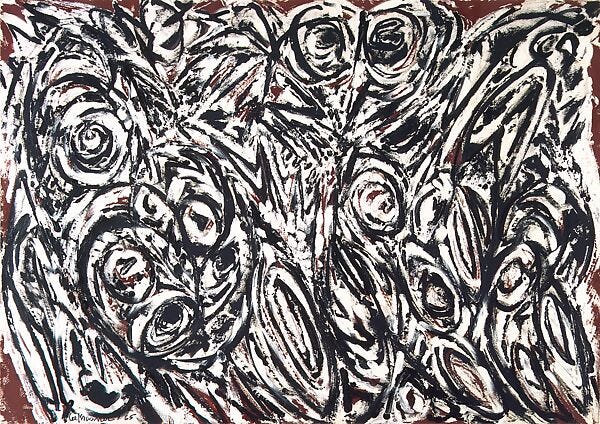



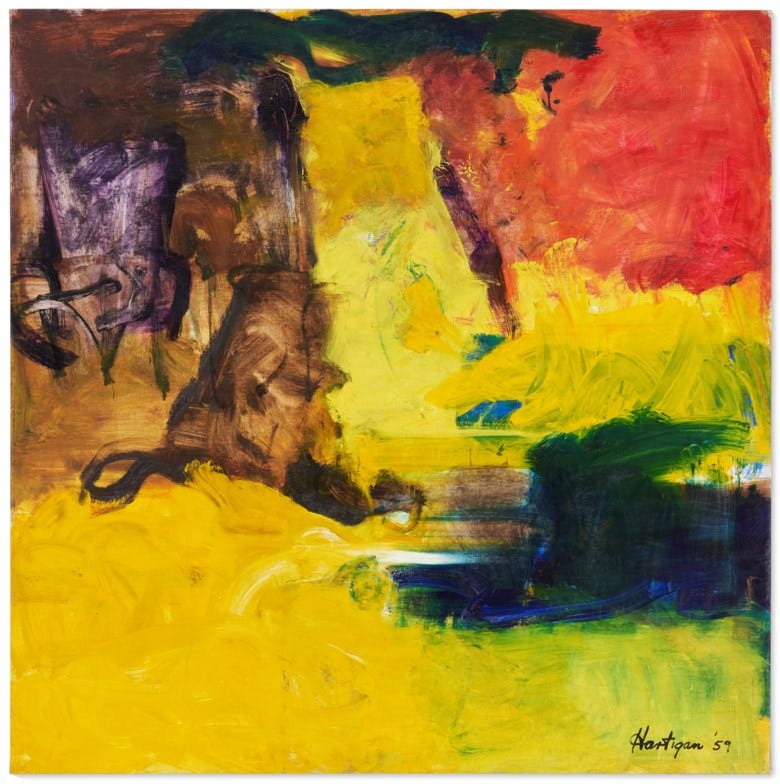

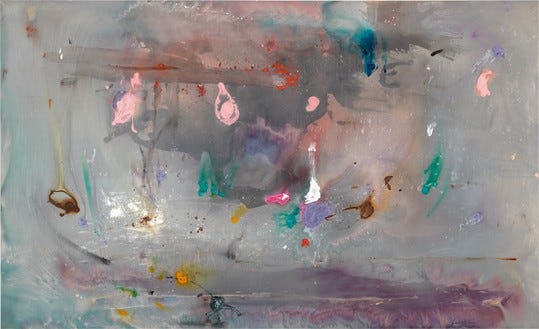

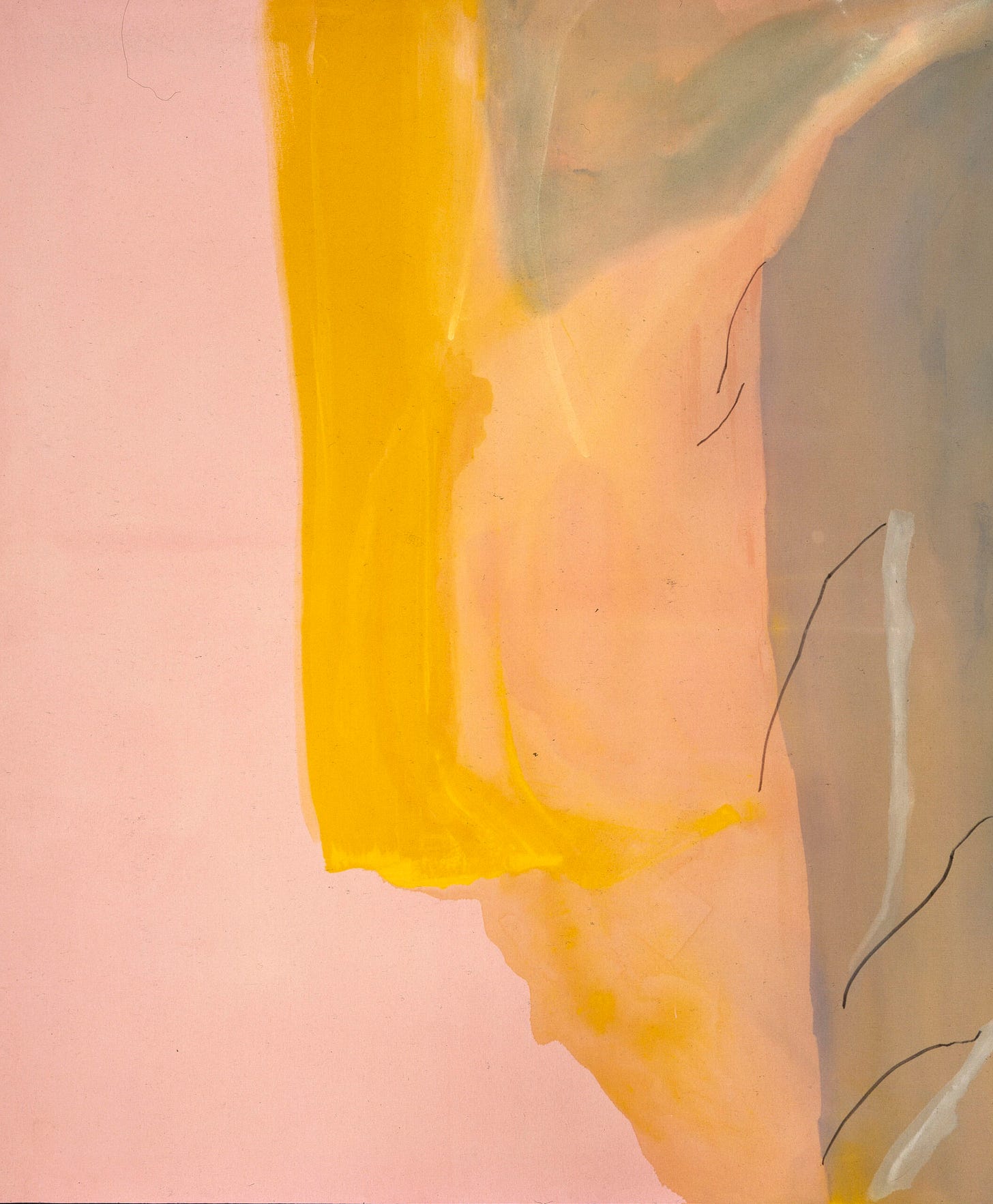
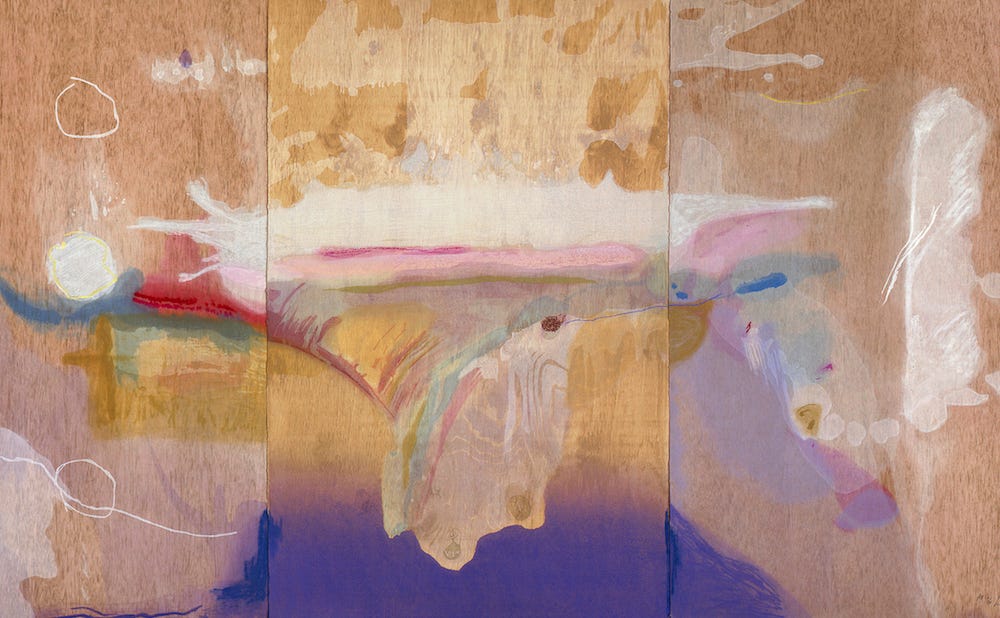
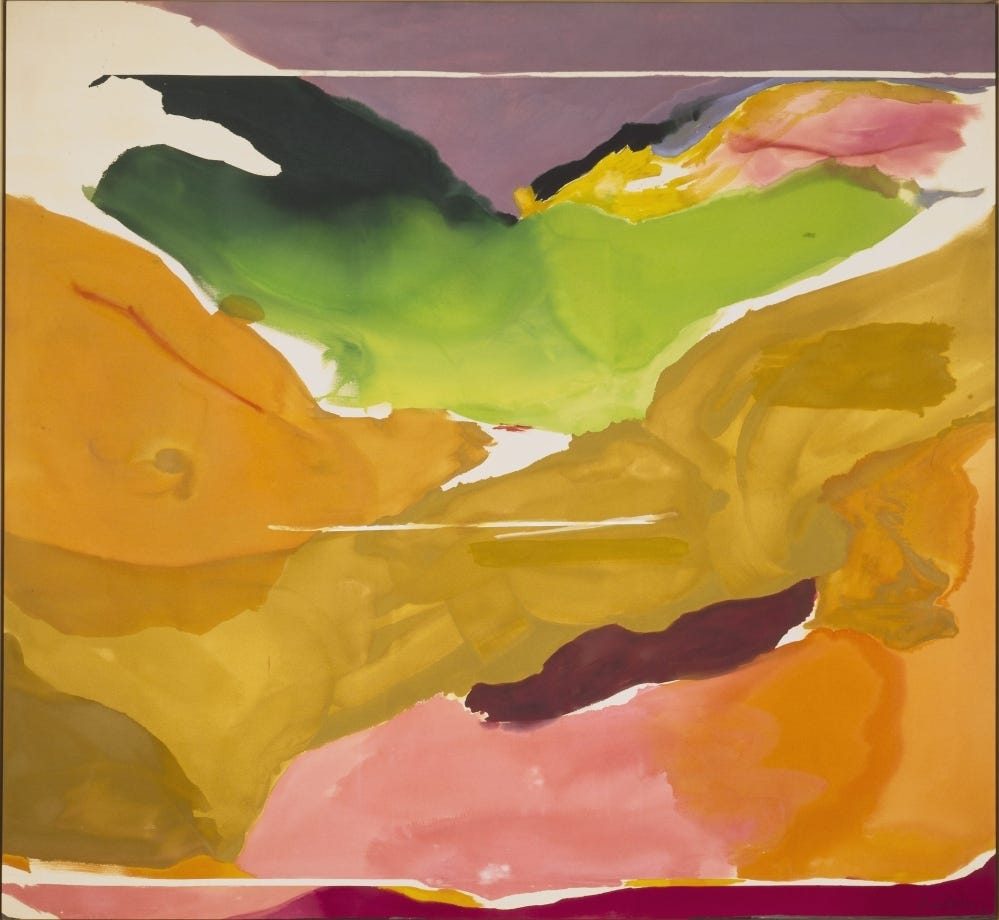
I adore her and those books so so much! I’ve not read all of 9th Street Women but I’ll finish reading it at some point.
Another artist I didn't know before know: Helen Frankenthaler ... great introduction to her work <3